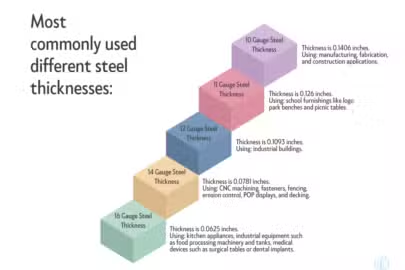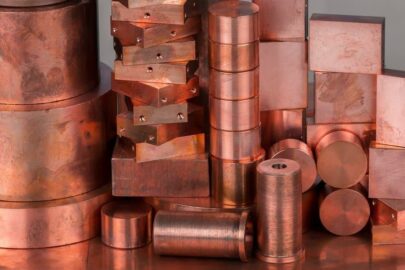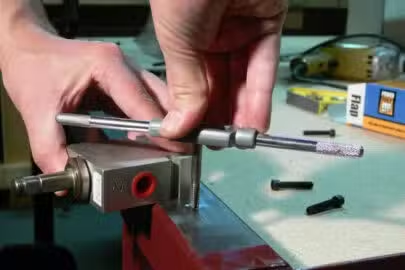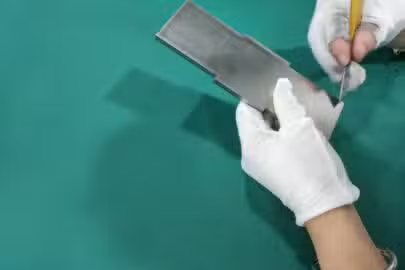For millennia, bronze, a time-honored alloy, has been a vital part of human culture. This alloy, made mostly of copper and tin, has left an indelible impact on history, playing an important role in the development of tools, weapons, and art.
Bronze has evolved through the crucible of time, becoming more than just a metal alloy. Its history stretches from the dawn of metallurgy, when early civilizations discovered the alchemy of combining copper and tin, to the present, when it continues to shape industries and arts alike.
This guide will go into the depths of bronze, revealing its composition, qualities, applications in numerous industries, and relevance in today’s modern world.
Composition of Bronze
Bronze is a harmonic combination of copper and tin at its fundamental basis. This alloy, which is typically composed of 88% copper and 12% tin, radiates a distinct synergy that provides remarkable strength and malleability. The beauty of bronze, on the other hand, resides in its versatility; the alloying dance goes beyond the basic duet of copper and tin.
Aluminum, manganese, and phosphorus are typically introduced into this metallic ballet to fine-tune its qualities. As a result, a family of bronze alloys has been created, each with particular properties adapted to certain applications. The bronze composition is a delicate balance that converts it into a material of infinite possibilities, from the beautiful curves of an artistic sculpture to the solid structure of an industrial component.
Properties of Bronze
Bronze, with its fascinating alloyed composition, has a lot of properties that make it important across a wide range of applications. These include:
Mechanical Properties
- Strength: Bronze has remarkable strength, allowing it to withstand harsh environments. This property guarantees its applicability for applications requiring toughness and durability.
- Ductility: The capacity to deform without fracture enables the casting of complex shapes and the construction of delicate structures. The ductility of bronze allows for artistic expression and intricate design in a variety of sectors.
- Hardness: Bronze high hardness lends a layer of resilience to its mechanical capabilities. This makes it ideal for applications requiring high resilience to wear and deformation.
Thermal Properties
- Conductivity: Bronze has a high thermal conductivity, which allows for efficient heat transfer. This feature makes it an excellent candidate for applications requiring precise thermal management, such as heat exchangers and delicate electrical components.
- Expansion Coefficient: Bronze mild expansion coefficient assures dimensional stability, which is critical in situations where exact measurements are required. This feature helps to component dependability and lifetime.
Other properties include:
Corrosion Resistance
The intrinsic bronze corrosion resistance is a notable property, particularly in marine conditions. Because of its capacity to withstand the corrosive effects of seawater, bronze is a robust and dependable material for nautical applications.
Wear Resistance
Bronze wear resistance makes it a frontrunner in settings requiring extended endurance. This feature is critical in friction and abrasion-prone applications such as bearings, gears, and other components.
Grades of Bronze
Bronze comes in various grades, each tailored to meet specific requirements and applications. These grades are distinguished by their composition, mechanical properties, and intended uses.
Phosphor Bronze: PB1Grade

Composition: Contains copper, tin, and phosphorus.
Properties: Exhibits high strength, and excellent corrosion resistance, and is often used in electrical applications such as springs and connectors.
Cold forming procedures can be used to form PB1 using ‘die’ forming processes. The metal hardness, yield strength, and tensile strength will be increased as a result of this treatment.
Although PB1 is not suited for welding, it can be brazed and soldered satisfactorily.
Machine/saw cutting and flame cutting techniques can both be used to successfully cut phosphor bronze. Coolant is recommended for tool longevity.
PB1 can be annealed/stress alleviated by heating it to 500°C-700°C for one hour per inch thickness and then allowing it to cool naturally. Rapid cooling or quenching methods are not advised since they might cause fractures and disintegration.
This bronze grade cannot be heated but can be work-hardened. It can be used for casting and injection molding processes.
Aluminum Bronze
Composition: Copper alloyed with aluminum.
Properties: Known for its high strength, corrosion resistance, and wear resistance. Aluminum bronze is commonly used in marine applications, heavy-duty equipment, and aerospace components.
Bearing Bronze: SAE 660

Composition: A specialized bronze designed for bearing applications, often containing copper, tin, lead, and other elements.
Properties: Exhibits excellent wear resistance, low friction, and high load-bearing capacity. Bearing bronze is specifically formulated for use in bearings, bushings, and other sliding or rotating components.
Cold-forming SAE 660 increases the metal’s hardness, yield strength, and tensile strength.
Silicon Bronze
Composition: Copper with silicon as a significant alloying element.
Properties: Offers good strength and corrosion resistance. Silicon bronze is favored for architectural applications, sculptures, and artistic casting due to its fluidity during the casting process.
Manganese Bronze
Composition: Copper alloyed with manganese.
Properties: Provides excellent strength, and corrosion resistance, and is often used in heavy machinery, gears, and marine applications.
Leaded Bronze
Composition: Copper with added lead.
Properties: Offers enhanced machinability and is used in applications such as bearings and bushings.
These are just a few examples of the many bronze grades available. Selecting the appropriate grade depends on the specific characteristics required for a given application. Engineers and manufacturers carefully consider these grades to ensure that bronze serves its intended purpose optimally.
Applications of Bronze
Bronze, with its diverse composition and extraordinary qualities, is at the forefront of numerous industries, leaving an unmistakable mark on applications ranging from artistic to industrial.
The bronze casting capabilities take the front stage in manufacturing and construction. Because of the alloy’s malleability, elaborate shapes and robust structures may be created, making it a popular choice for sculptures, architectural features, and functional components.
With its constant contact with seawater, the marine industry values bronze’s anti-corrosive characteristics. Bronze is a strong defender against the corrosive powers of the ocean, ensuring endurance and reliability in maritime applications ranging from ship propellers to underwater fittings.
Bronze’s strong conductivity comes to the fore in electrical applications. It is chosen for electrical connectors, terminals, and other components where the efficient passage of electricity is critical.
Comparison with Other Materials
Understanding how bronze compares to other materials provides valuable insights into its unique characteristics and advantages.
| Properties | Bronze | Brass |
| Strength | Typically exhibits greater strength than brass, making it a preferred choice in applications where durability and load-bearing capacity are essential. | While strong, brass may be considered less robust than bronze in certain high-stress situations. |
| Color and appearance | Often has a darker, reddish-brown tint, giving it a distinct appearance that can range from antique brown to golden brown. | Possesses a bright yellow hue, offering a visually striking and polished look. |
| Corrosion resistance | Shows excellent corrosion resistance, making it suitable for outdoor and marine applications where exposure to moisture is a concern. | While corrosion-resistant, brass may tarnish over time, and its corrosion resistance can be affected by environmental conditions. |
| Applications | Commonly used in applications where strength, corrosion resistance, and durability are paramount, such as marine hardware, bearings, and sculptures. | Preferred for decorative purposes, musical instruments, plumbing fittings, and applications where the emphasis is on aesthetics. |
Bronze vs. Steel:
| Properties | Bronze | Steel |
| Corrosion resistance | Possesses natural resistance to corrosion, making it an excellent choice for applications in marine environments and outdoor settings. | Prone to corrosion, especially in humid or corrosive environments. Protective coatings or alloying with other elements are often required to enhance corrosion resistance. |
| Weight | Generally lighter than steel, offering a balance between strength and weight. This is advantageous in applications where weight is a critical factor. | Heavier compared to bronze, making it suitable for applications where the structural integrity and weight of the material are crucial, such as in construction. |
| Strength | Exhibits considerable strength, particularly in comparison to its weight. Suitable for applications where a balance between strength and weight is essential. | Renowned for its high strength, making it a preferred choice in heavy-duty construction, structural engineering, and manufacturing. |
| Applications | Commonly used in situations requiring corrosion resistance, such as marine components, bearings, and sculptures. Its balance of strength and weight also finds applications in diverse industries. | Widely employed in construction, infrastructure, automotive manufacturing, and heavy machinery where high strength and durability are paramount. |
Bronze vs. Aluminum:
| Properties | Bronze | Aluminum |
| Strength and ductility | Generally stronger and more ductile than aluminum. This makes bronze suitable for applications where a balance between strength and malleability is crucial. | Exhibits lower strength compared to bronze but is known for its exceptional lightness and malleability. |
| Corrosion resistance | Displays excellent corrosion resistance, particularly in harsh environments. Well-suited for outdoor and marine applications where exposure to moisture is constant. | Naturally corrosion-resistant due to the formation of a protective oxide layer. However, in certain aggressive environments, additional protection may be required. |
| Weight | Generally heavier than aluminum, which can impact weight-sensitive applications. | Renowned for its low density, contributing to its lightweight nature. Ideal for applications where weight reduction is a priority, such as in the aerospace industry. |
| Applications | Commonly used in situations requiring strength, corrosion resistance, and durability, such as marine components, bearings, and sculptures. | Widely employed in aerospace, automotive, and construction industries where its lightweight nature is advantageous. Also popular in everyday items like beverage cans and household products. |
Fabrication and Machining of Bronze
Crafting with bronze involves a delicate dance of science and art. Various fabrication and machining techniques bring this alloy to life, shaping it into intricate components and structures that span a myriad of applications.
Casting Processes
- Sand Casting: A traditional method involving the creation of a mold in sand, sand casting allows for the production of complex shapes and sizes, making it a popular choice for artistic sculptures and industrial components alike.
- Investment Casting: Also known as lost-wax casting, this precision method is ideal for intricate designs. It involves creating a wax pattern, investing it in a ceramic shell, and then melting the wax to create a mold for molten bronze.
Machining Techniques
- Turning: Involves rotating a workpiece on a lathe while a cutting tool shapes it. Turning is used to create cylindrical shapes and intricate details on bronze components.
- Milling: Utilizes rotary cutters to remove material from a workpiece. Milling is employed for creating flat surfaces, pockets, and slots in bronze, ensuring precision in the final product.
The fusion of these techniques allows artisans, engineers, and manufacturers to harness the full potential of bronze. Whether it’s a finely detailed sculpture or a robust industrial component, the fabrication and machining of bronze involve a careful orchestration of tools and processes.
Maintenance and Care of Bronze
Preserving the luster of bronze requires attention and care. Here, we explore the techniques and practices that ensure bronze retains its aesthetic appeal and functional integrity over time.
- Gently clean surface grime and tarnish with a soft cloth or sponge. Avoid using abrasive materials that could scratch the surface.
- Non-Abrasive Solutions: To eliminate filth, use mild cleaning solutions such as water and a soft soap. Following cleaning, ensure thorough washing and drying.
- Wax Coatings: A thin layer of wax applied to bronze protects it from the weather and delays the oxidation process. This is especially good for bronze statues and architectural items placed outside.
- Clear Lacquer: A clear lacquer coating acts as a corrosion barrier. It is appropriate for indoor bronze products that can have a visible finish.
- Regular inspection: Periodic examinations enable the early detection of any signs of deterioration. Immediate cleaning and maintenance can help to prevent any damage.
- Humidity Control: Keeping the humidity in the surrounding environment under control, particularly for indoor bronze products, aids in the prevention of moisture-related corrosion.
Environmental Impact
In an era focused on sustainability, understanding the environmental impact of materials is paramount. Here, we explore how bronze aligns with ecological considerations and sustainable practices.
- Bronze has a high recyclability, which contributes to a more environmentally friendly manufacturing method. Recycling bronze reduces raw material demand while minimizing environmental impact.
- The resilience and longevity of bronze contribute to sustainable practices by decreasing the need for regular replacements. This is particularly important in applications like durable products and infrastructure.
- Bronze has low toxicity, reducing potential environmental harm during manufacturing, use, and eventual disposal or recycling.
Conclusion
Bronze has played a significant role throughout human history and continues to be a widely used metal. The diverse combinations of metals used to create bronze alloys have led to a multitude of variations available in the market. The enduring popularity and versatility of bronze make it a valuable material with a rich history and a wide range of applications.
Choosing bronze offers a multitude of benefits, from exceptional durability to versatile applications. Whether in sculptures, sand casting, rapid prototyping, or various industries, bronze stands out as a reliable and cost-effective choice. Join the ranks of professionals who trust Zintilon for top-notch services. Contact us today to discover how we can contribute to the lasting success of your projects!
FAQ
What is bronze, and how is it different from other metals like brass and steel?
Bronze is a copper and tin alloy with additional elements added for special qualities. Unlike brass, a copper-zinc alloy, and steel, which is mostly iron, bronze has a unique combination of strength, corrosion resistance, and malleability, making it appropriate for a wide range of applications.
What are the common applications of bronze?
Bronze is used in a variety of industries. It is widely used in manufacturing and construction for complicated pattern casting, in the marine industry for its anti-corrosive qualities, and in electrical applications due to its outstanding conductivity. Bronze is also used in artistic sculptures, bearings, and a variety of practical components.
How can bronze be maintained to ensure longevity and aesthetic appeal?
Cleaning with mild abrasives or non-abrasive solutions regularly aids in the removal of surface grime and tarnish. To prevent corrosion, protective coatings like wax or clear lacquer can be used. Periodic inspections and humidity control also help to keep bronze goods in good condition.
Is bronze an environmentally friendly material?
Due to its great recyclability, bronze is considered environmentally benign. Recycling bronze minimizes the demand for raw resources, which contributes to more environmentally friendly industrial practices. Furthermore, the durability and low toxicity of bronze align with eco-friendly ideas.
Can bronze be used in modern, sustainable practices?
Because of its recyclability and durability, bronze is a material that is compatible with modern sustainability practices. Its resource efficiency and potential for low environmental effects make it a viable choice in modern applications.





